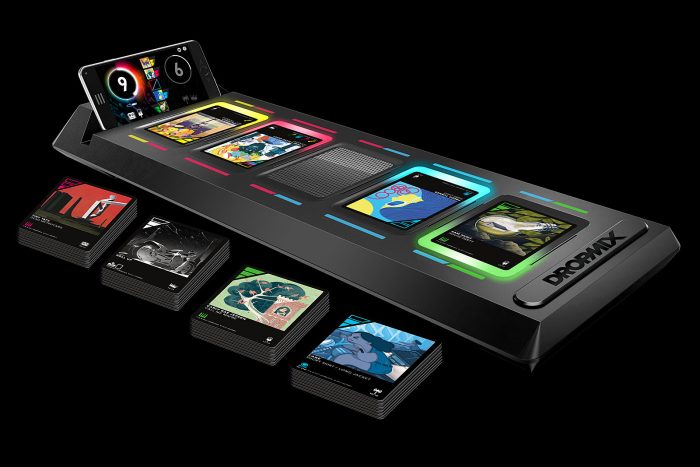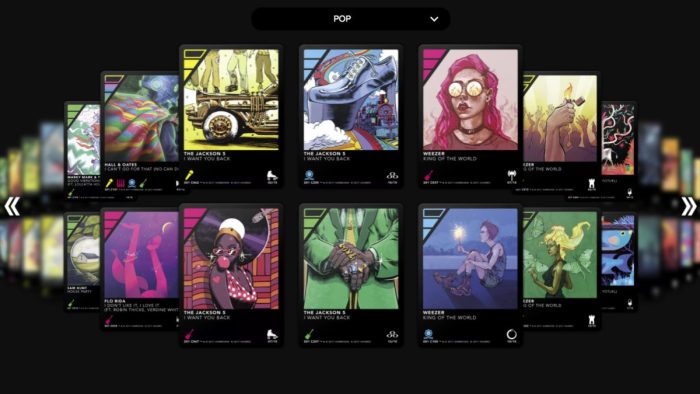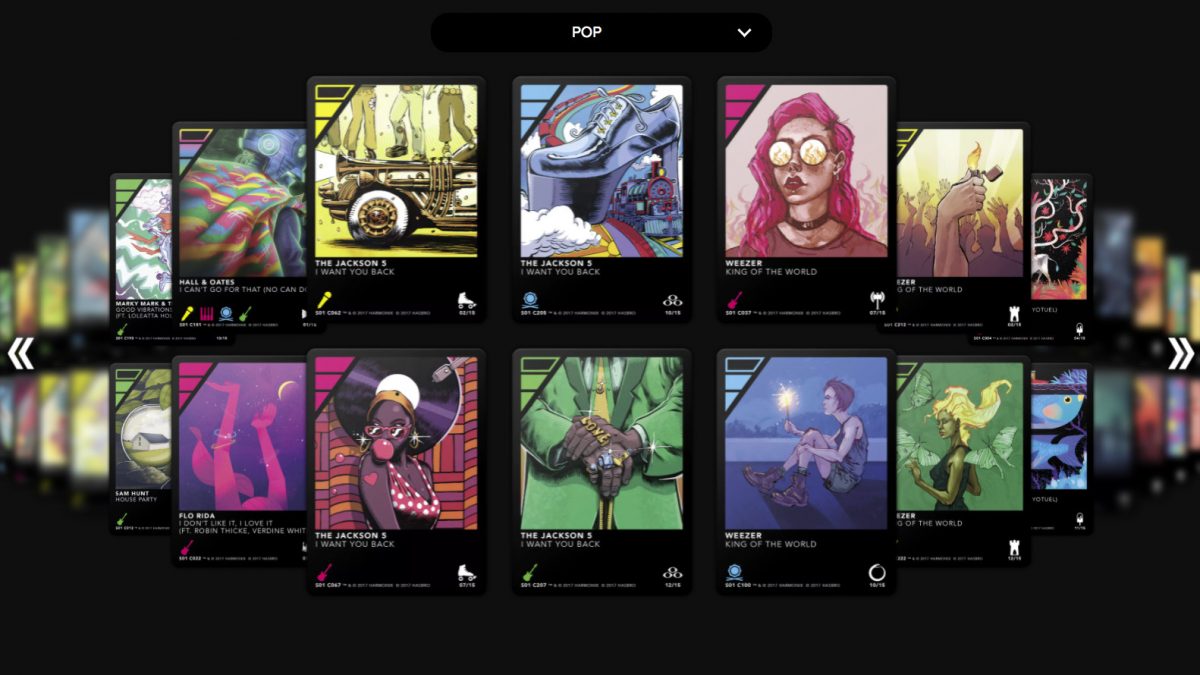
If you would have told me in 2007, hot on the success of Rock Band, that in 10 years Rock Band wouldn’t really be a thing anymore and that Harmonix would be making a musical card game with Hasbro, I’d have been super confused — but here we are.
Dropmix is a music mixing game, plain and simple. You create various mixes in cooperative or competitive play by placing NFC-chipped cards down on the plastic play field used in conjunction with a phone or tablet. In function it’s a lot like the company’s previous rhythm games. Cards are color coded, as are spots on the game board, with each color corresponding to a different part of the mix (vocals, bass, etc.). The core gameplay of throwing down cards and seeing how different arrangements vibe with each other in the game’s freestyle mode is satisfying and fun, but Dropmix gets more interesting and challenging when you play one of the more structured modes.
As far as game types go, Clash is definitely when the experience is at it’s best. Clash puts 2-4 players against each other using pre-constructed or custom decks in a race to 21 points. Points are racked up by a variety of factors, including control of the board, filling empty card types and knocking out an opponent’s cards with a better, higher level card. These structured game modes are also where the effect cards come into play, which allow you to do things like change your hand and mess with cards currently on the board. Players also have the option of using one of their two actions per turn to hit the Dropmix button, which spins a wheel and can force players to discard cards as well as freeing up the play field for a new go.

The game also features a party mode, wherein up to five players can split all of the cards up and take turns trying to fulfill requests provided by the game in the fastest time, with score penalties if done incorrectly. In my experience, the party mode seems to be the weakest of the three, with groups of more casual players preferring the freestyle option every time.
The most astonishing thing about Dropmix is how seamlessly everything just works. Cards are instantly recognized by the game board and despite my attempts to derail it’s tracks by just throwing down more and more cards in freestyle mode, I never could. What’s even more impressive is that the mixes it comes up with all work, for the most part. You wouldn’t think mashing up Disturbed and Carly Rae Jepsen to be pleasant in any way, but Dropmix somehow manages. It’s a legitimately impressive piece of techno-wizardry that I adore.
That said, while people I’ve shown it to have been universally enamored by the mixing aspect of it, I’ve found the game part of it to be hit or miss for most on their first try. Granted, when it does click and you get a real, competitive game going, it’s fun and intense, but I’ll be damned if watching people bounce off of it during holiday gatherings was one of my biggest disappointments of 2017.
I’d be remiss if I didn’t mention the card situation, however. Dropmix ships with 60 cards of various styles, but you have the option of expanding your library by buying $5 random booster packs of 5 cards or one of the $15 themed packs containing 16 cards. I have had great experiences with the theme packs, as they’ve varied the gameplay considerably. The booster packs forever, I stopped buying after my fourth duplicate, which, while is the nature of the beast for these things, still disappointed me.
It’s also worth mentioning that the game board itself feels a bit large and cumbersome, and doesn’t store particularly well, but that’s more or less par for the course with peripherals for Harmonix games at this point.
Dropmix is a really good time, so long as you have at least one other person to play it with. However, the asking price of $100 feels a bit steep, to be honest. If you can get it on a sale though (which has been happening more and more lately), I definitely can’t recommend it enough.
This Hot Take is based on a copy of the game purchased at retail.



No Comments